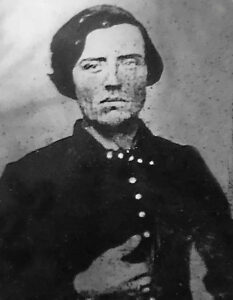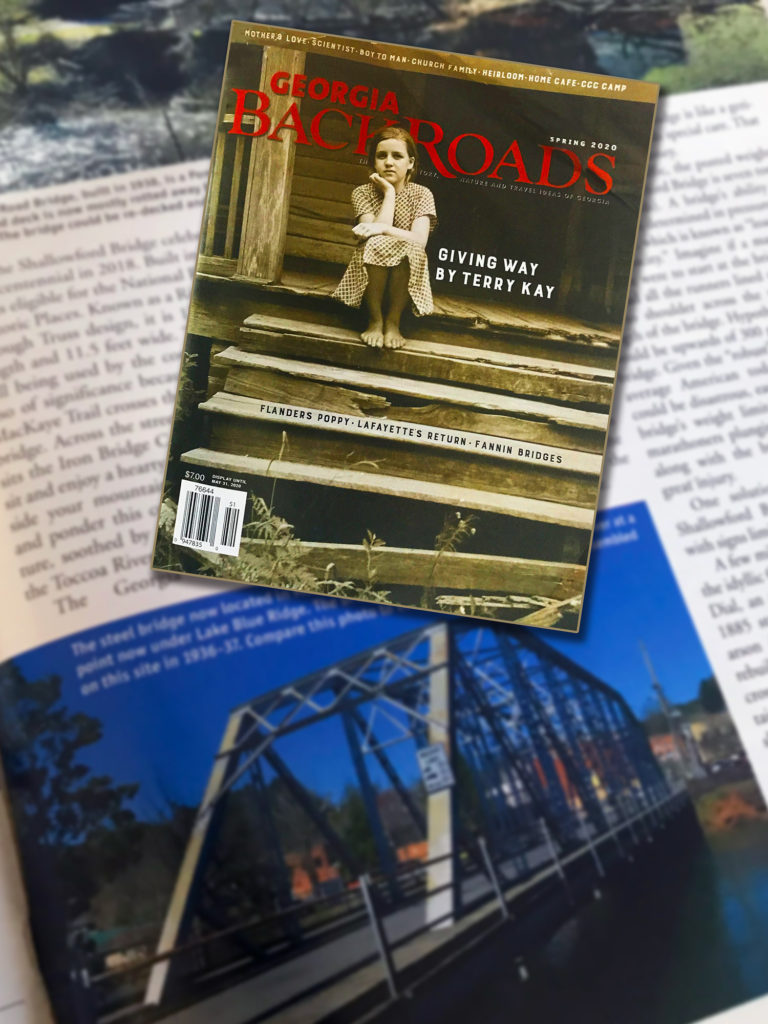This story is part of an upcoming “History Around Every Bend” episode to be titled “1864: Chaos in the Mountains” which will explore a series of events that started at the beginning of that year and proceeded through November 1864, each of which was a cause-and-effect incident related to the next.
Friday, September 2nd, 1864 dawned as another humid, hot day – the last vestiges of summer held its grip on the peaks and hollows of the North Georgia mountains. Just 100 miles to the south, as September 2nd progressed, the last vestiges of the confederacy released its grasp in the fall of Atlanta, and the critical hub of the south fell to Sherman’s army.
Senses fully engaged, carefully, with stealth, twenty-seven-year-old Edward Callahan O’Kelley, a Union private in Company C of the 10th Tennessee Cavalry[1]Compiled Service Records, Company G, 10th Tennessee Cavalry (Union), Edward Callahan O’Kelley. Age 26, Enlisted 1/18/1864 for a period of 3 years in Nashville, TN. Mustered into service 2/27/1864. … Continue reading and his brother thirty-three-year-old John Pendleton O’Kelley plodded through the maze of mountain laurels near the Toccoa River. John was a rebel private AWOL from Company H of the 42nd Georgia Infantry CSA[2]Compiled Service Records, 42nd Georgia Infantry (Confederate), John Pendleton O’Kelley. Muster Date 3/4/1862;’ 5/15/1862 Disabled/Rheumatism; 10/2/1863 Absent, Unfit for Service.

Copied from
Aska Road – Toccoa Rapids Roadside Marker,
original image owned by
Bob Barton, descendant of Edward O’Kelley
Edward Callahan O’Kelley himself had at one time fought for the rebel cause as a private in Company G of the 24th Georgia Infantry[3]Compiled Service Records, 24th Georgia Infantry (Confederate), Edward Callahan O’Kelley. Enlisted 8/24/1862 in Whit Co., GA by Capt. Leonard. Left sick in Winchester, VA. 10/19/1862; Admitted to … Continue reading. He was wounded at 2nd Manassas in August 1862 and in the aftermath had switched sides, joining Federal forces in Nashville in January 1864. “We were always told as was passed down through my aunts and uncles that he was not happy with how his rebel company treated the civilians–pillaging and raping”, said Bob Barton, of Marble, North Carolina, O’Kelley’s 3X grand nephew, “they weren’t raised that way.[4]Bob Barton interview by Steve Procko; June 2018“
Since he was a former soldier in the confederate army, Edward O’Kelley signed a loyalty oath to the United States. There were several variations of this oath, but they all carried the same message–this would have likely been what Edward C. O’Kelley signed when he enlisted in Nashville at the Provost Marshall’s office:
Continue Reading: Incident On The Toccoa
References
| ↑1 | Compiled Service Records, Company G, 10th Tennessee Cavalry (Union), Edward Callahan O’Kelley. Age 26, Enlisted 1/18/1864 for a period of 3 years in Nashville, TN. Mustered into service 2/27/1864. Present on muster rolls Mar-Apr, May-June, July-Aug/1864. Last paid April 20, 1864. He is reported as Killed in Action (KIA)A in September 15, 1864 though the place he was killed is incorrectly reported as Lumpkin County. Adjutant General’s Office, Washington, DC. 10/10/1864 officially reports him as Killed in Action. |
|---|---|
| ↑2 | Compiled Service Records, 42nd Georgia Infantry (Confederate), John Pendleton O’Kelley. Muster Date 3/4/1862;’ 5/15/1862 Disabled/Rheumatism; 10/2/1863 Absent, Unfit for Service |
| ↑3 | Compiled Service Records, 24th Georgia Infantry (Confederate), Edward Callahan O’Kelley. Enlisted 8/24/1862 in Whit Co., GA by Capt. Leonard. Left sick in Winchester, VA. 10/19/1862; Admitted to Richmond Hospital No. 20 10/31/1862; Appears on receipt roll for clothing 2d Division Hospital; Camp Winder; Richmond, VA 1/15/1863. No further records after that date. |
| ↑4 | Bob Barton interview by Steve Procko; June 2018 |







